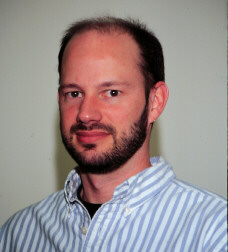
Ph.D. University of Wisconsin - Madison, 1990
Telephone: 301-405-8300
FAX: 301-314-9082
E-mail:delwiche@umd5.umd.edu
Research Area: Plant Molecular Systematics
When eukaryotic diversity is studied with molecular phylogenetic methods, far more sequence divergence is found among algae and other protists than in plants, animals, or fungi. This is consistent with the tremendous cytological and biochemical diversity of protists, as well as with their relatively ancient fossil records, but is frequently not reflected by structural diversity. Some algal taxa (e.g., the green algal genus Chlorella) are junkyards housing phylogenetically disparate taxa, while others -- typically those marked by an unambiguous structural feature -- are natural groups by any measure. But even in well defined algal taxa, considerable sequence divergence is often observed, and the biological significance of this diversity at the molecular level is not well understood. Recent advances in systematics, particularly the use of molecular data analyzed with objective methods, have made it practical to reconstruct the history or evolution with confidence. Information on how organisms are related to each other can be used to infer how the features of those organisms evolved. This comparative biological approach can be used to make generalizations about groups of organisms that are not possible with reductive methods alone.
We use DNA sequencing, computer analysis, and structural and biochemical studies to understand the phylogeny and evolution of algae, with particular emphasis on two problems; the early evolution of plastids, and the green algal origin of land plants. One major project in my laboratory address the early evolution of plastids include study of plastid genomes found in two groups of organisms classified in the Alveolata, dinoflagellates and apicomplexa. The dinoflagellates have long been recognized as photosynthetic eukaryotes, but their plastid genomes have not been well characterized. By contrast, the apicomplexa are a group of obligate parasites of animals that have only recently been shown to contain plastids. We hope to determine the number of independent secondary endosymbiotic events that have occurred in dinoflagellates, and the phylogenetic origin of the plastids of apicompexans. Another major project in my laboratory involves the green algal relatives of land plants. Phylogenetically, land plants fit among green algae in the Class Charophyceae, at roughly the level of an order. We are currently examining structural and molecular diversity in the charophycean algae in an effort to understand the early evolution of plants.
Delwiche, C. F., M. Kuhsel, and J. D. Palmer. 1995. Phylogenetic analysis of tufA sequences indicates a cyanobacterial origin of all plastids. Mol. Phylog. Evol. 4:110-128.
Barns, S.M., C.F. Delwiche, J.D. Palmer, and N.R. Pace 1996. Perspectives on archaeal diversity, thermophily and monophyly from environmental rRNAsequences. Proc. Natl. Acad. Sci. USA 93:9188-9193.
Delwiche, C.F., and J. D. Palmer. 1996. Rampant horizontal transfer and duplication of rubisco genes in eubacteria and plastids. Mol. Biol. Evol. 13:873- 882.
Köhler, S., C.F. Delwiche, L.G. Tilney, P. Webster, R.J.M. Wilson, J.D. Palmer, and D.S. Roos. 1997. A plastid of probable green algal origin in apicomplexan plastids. Science 275:1485-1489.
Chapman, R.L, M.A. Buchheim, C.F. Delwiche, T. Friedl, V.A.R. Huss, K.G. Karol, L.A. Lewis, J. Manhart, R.M. McCourt, J.L. Olsen, and D.A. Waters. 1996. Molecular systematics of the green algae. In: Molecular Systematics of Plants, 2nd Ed., P.S. Soltis, D.E. Soltis, and J.J. Doyle (eds). Chapman and Hall, New York.
Delwiche, C.F., and J. Palmer. 1997. The origin of plastids and their spread via secondary symbiosis. In: Origins of the Algae and Their Plastids, D. Bhattacharya (ed.). Springer, Vienna.
Links for more information on Dr. Delwiche: